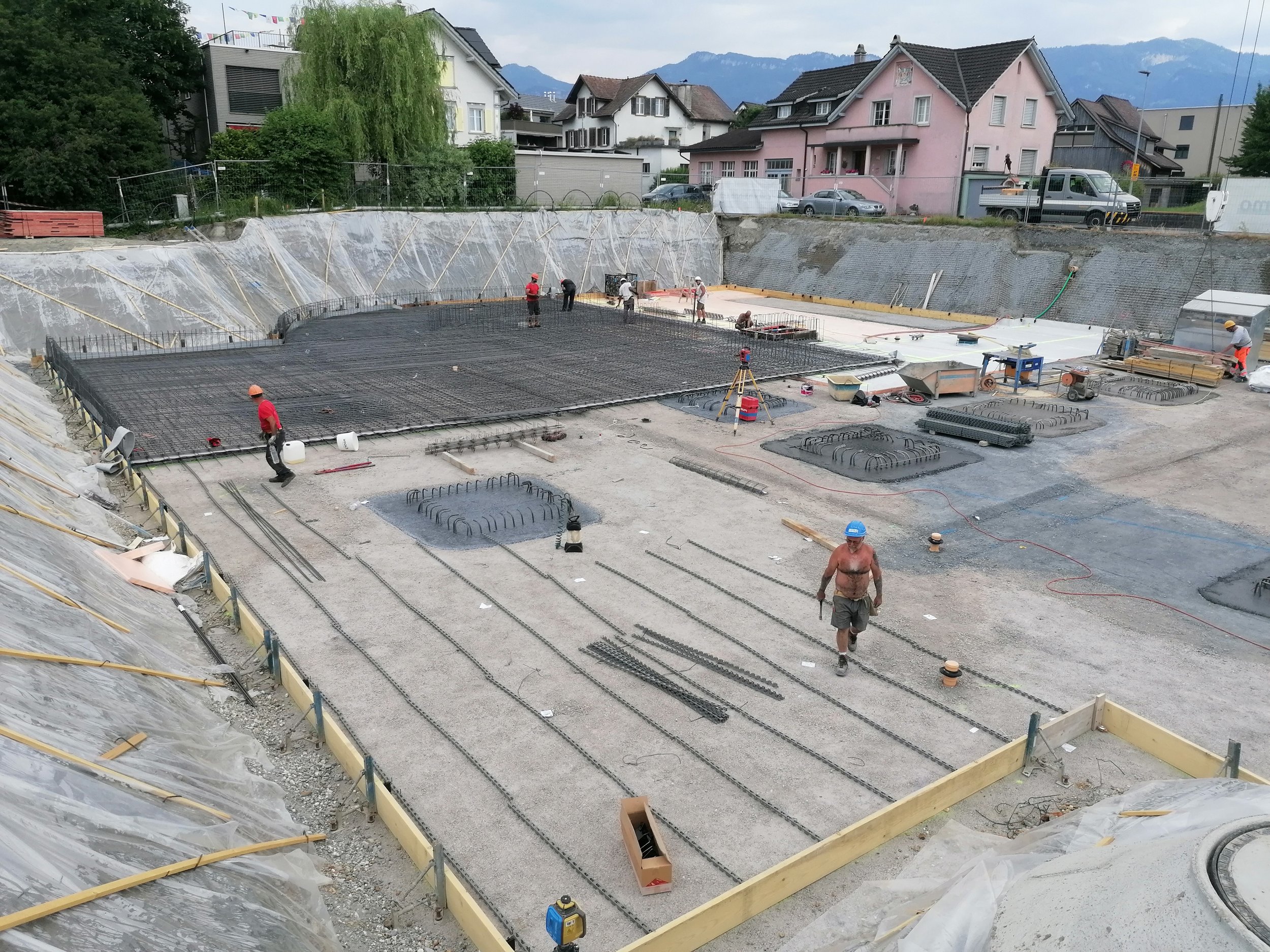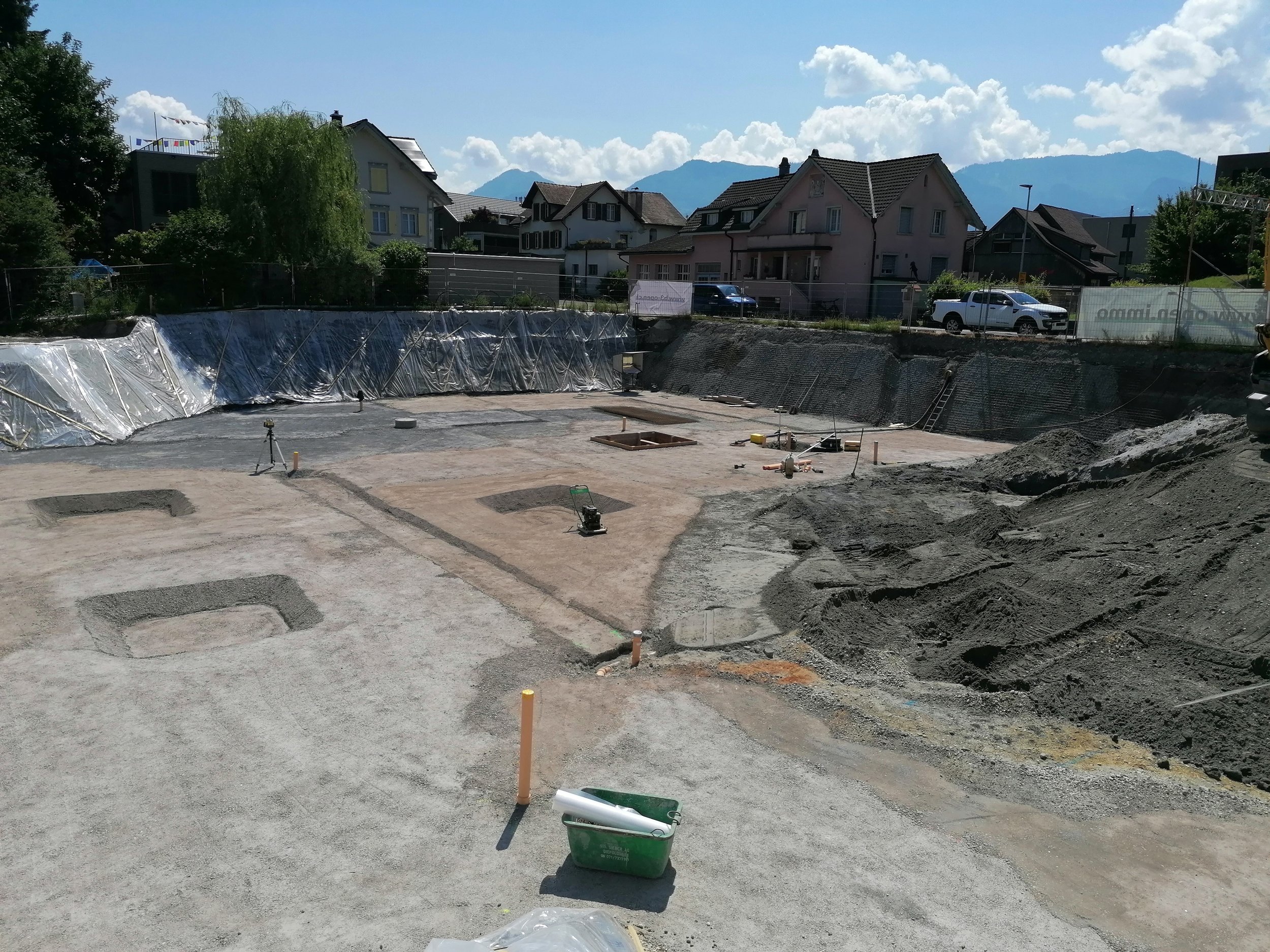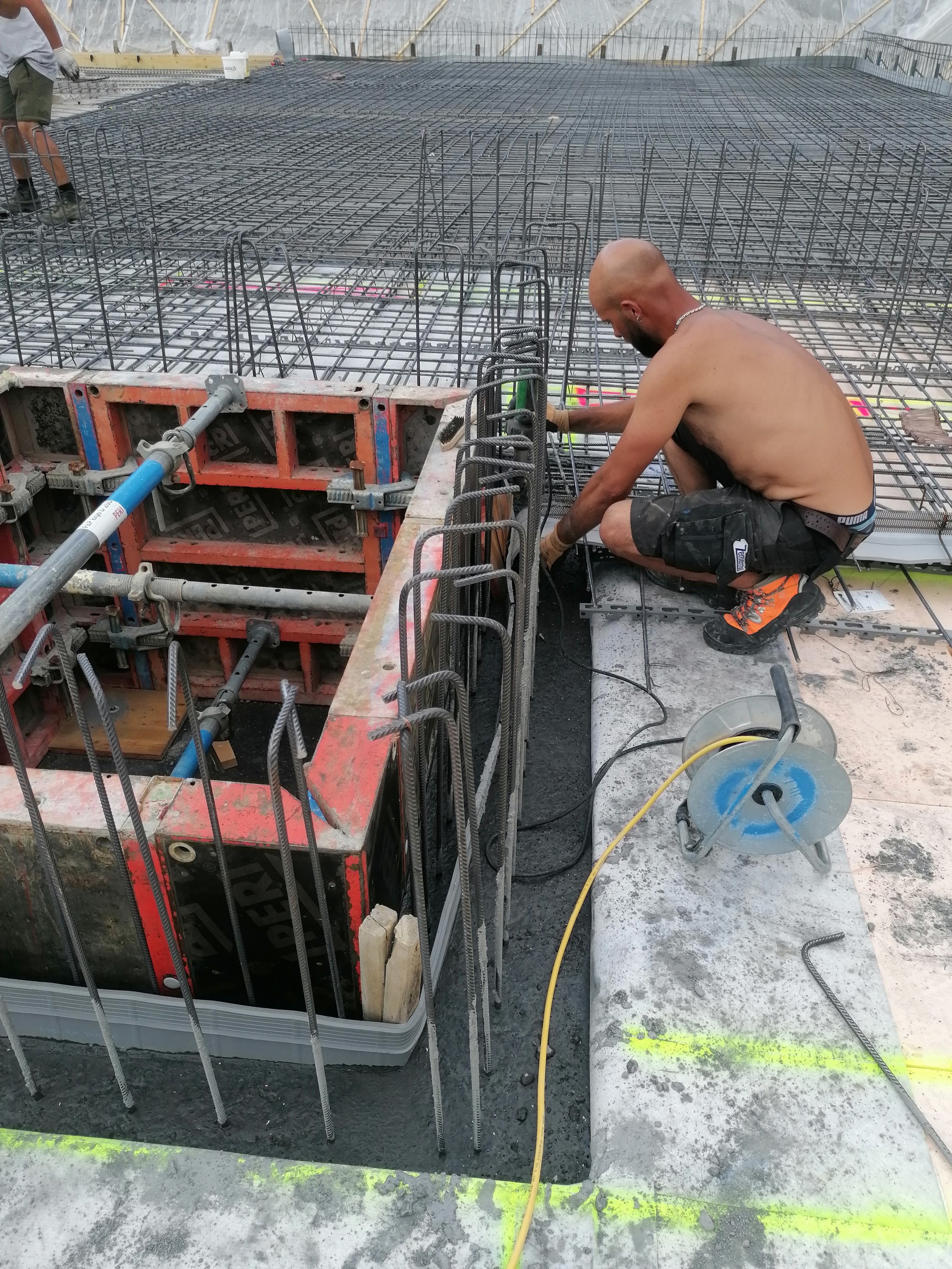A milestone! Construction of OPENLY Valley Widnau has begun with CO2-neutral reinforcing steel
Construction of the 20 million OPENLY Valley Widnau pilot project has begun. After the excavation (where we unfortunately did not get the only H2 hydrogen excavator in Switzerland), the foundation of the building with 2200 gross floor area is currently being poured.
The RedBull can factory is also located in the municipality of Widnau. This pumps 1 billion liters of water out of the groundwater every year. Thanks to or because of this groundwater, an extensive lowering of the groundwater level can be seen in the pictures. The entire underground car park is designed as a "white tank", the only possible building material is concrete. Thanks to the development of biochar concrete with Sigmund Sieber AG, it is possible to significantly reduce CO2 emissions. More on this in another blog post.
CO2 neutral reinforcing steel
Switzerland produces enough "steel waste" that already today 100% of the reinforcing steel used in construction comes from the circular economy. You have to understand the whole thing as a system - Switzerland needs steelworks so that it can process its own scrap and it is not transported across half of Europe. These steelworks require energy (gas today), but could also be operated with H2 (hydrogen). There would be enough energy for this (Alpine solar power plants). One (the state) would simply have to do it.
The innovation at OPENLY comes from Stahl Gerlafingen which belongs to the AFV Betram Group in Italy. Its #GenX is committed to "green steel" and has launched its own CO2 compensation projects as a group. For the first time ever in Switzerland, a steel delivery was CO2 offset. (With Chalibria certificates, see picture below). The process was handled by the supplier of the steel: SFS and Locher Bewehrungen. We would like to take this opportunity to thank both parties for sponsoring the certificate costs. This is the future for the construction industry!
1. reduce emissions as much as possible
2. already use CO2-compensated building materials (supplier selection)
3. understand buildings as c-sinks in which CO2 is stored in buildings for the long term (100+ years). Examples are wood, biochar and hemp.
See CO2 balance vegetable carbon concrete









